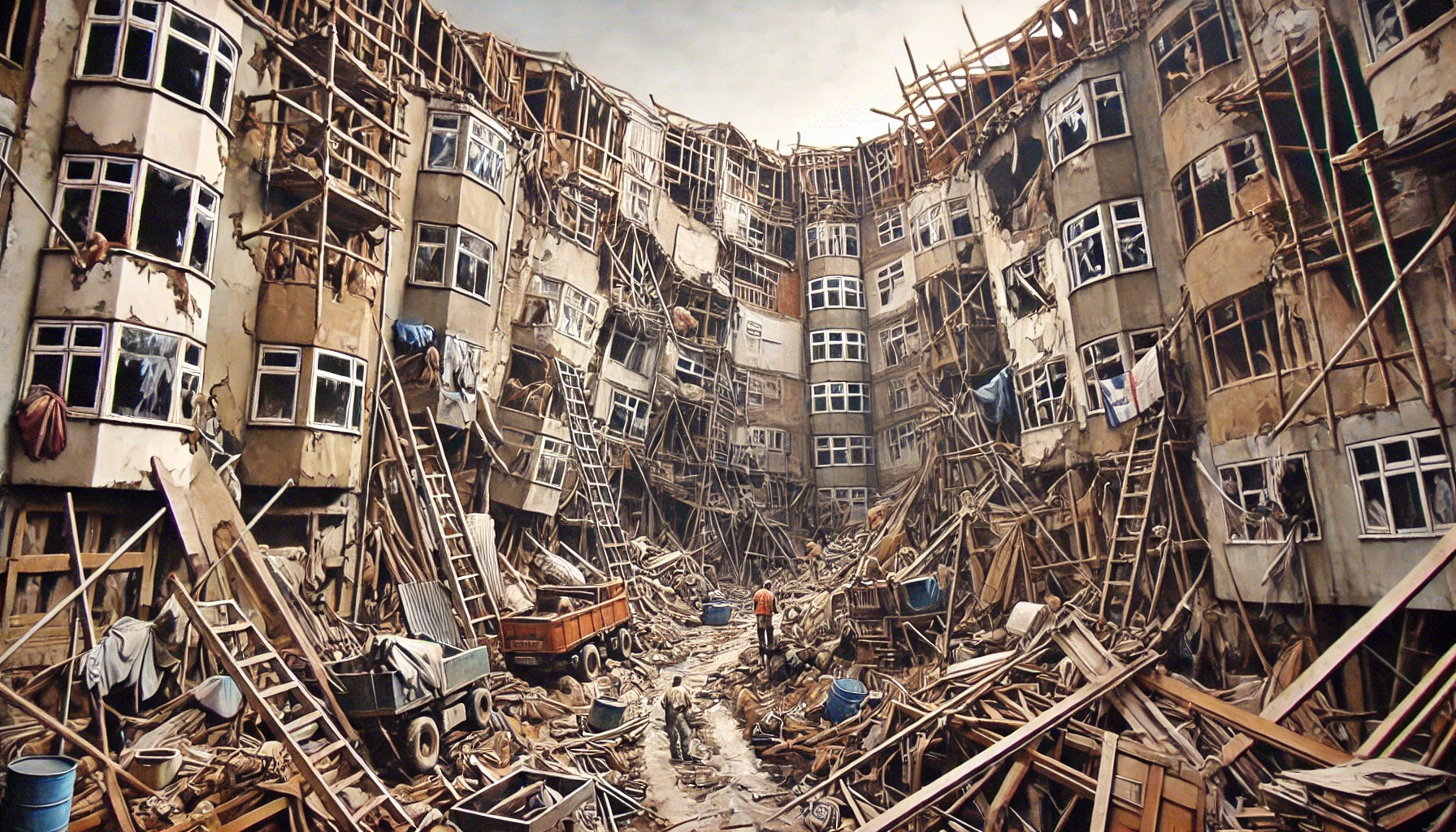Tofu Dreg construction is a term used to describe shoddy and substandard building practices. Originating from Chinese slang, it likens the poor quality of these constructions to the fragility of tofu, which is easily breakable and lacks structural integrity. Key characteristics of Tofu Dreg construction include the use of low-grade or inappropriate materials that do not meet standard building codes and regulations, inadequate oversight and management during the construction process leading to corners being cut and essential details being overlooked, and significant structural weaknesses that make the buildings unsafe and prone to damage or collapse. Additionally, there is a failure to adhere to safety protocols, putting both construction workers and future occupants at risk. As a result, structures built using Tofu Deng methods tend to deteriorate quickly and require frequent repairs. This type of construction is often a result of cost-cutting measures and a lack of regulatory enforcement, posing serious risks to public safety and leading to significant financial losses for property owners. It is crucial to be aware of these practices and to ensure that construction projects are carried out with proper materials, oversight, and adherence to building standards.
- 2008 Sichuan Earthquake School Collapses: One of the most tragic examples of Tofu Dreg construction was during the 2008 Sichuan earthquake in China. Numerous schools collapsed, resulting in the deaths of thousands of children. Investigations revealed that many of these schools were built using inferior materials and construction techniques, leading to their catastrophic failure.
- Lotus Riverside Complex, Shanghai (2009): A 13-story apartment building in the Lotus Riverside complex toppled over entirely, remaining mostly intact but lying on its side. The investigation found that the building’s foundations were poorly constructed, with excavation work for an underground garage weakening the building’s base and contributing to its collapse.
- Fenghua Middle School, Zhejiang Province (2014): A sports hall roof collapsed at Fenghua Middle School, killing one person and injuring several others. The collapse was attributed to substandard construction materials and methods, highlighting the ongoing issue of Tofu Dreg construction in public buildings.
- Harbin Hotel Collapse (2016): A hotel under construction in Harbin, China, collapsed, killing 10 workers. The collapse was linked to poor construction practices, including the use of inadequate materials and failure to follow safety protocols.
- Shenzhen Landslide (2015): While not a building collapse, the Shenzhen landslide disaster, which buried dozens of buildings and killed 69 people, was linked to the improper disposal of construction waste. The waste pile, which had grown to an unsafe height, collapsed and caused the landslide, illustrating the broader implications of negligent construction practices.
These examples underscore the severe consequences of Tofu Dreg construction. They highlight the critical need for stringent building regulations, proper oversight, and the use of quality materials to ensure the safety and durability of structures.
